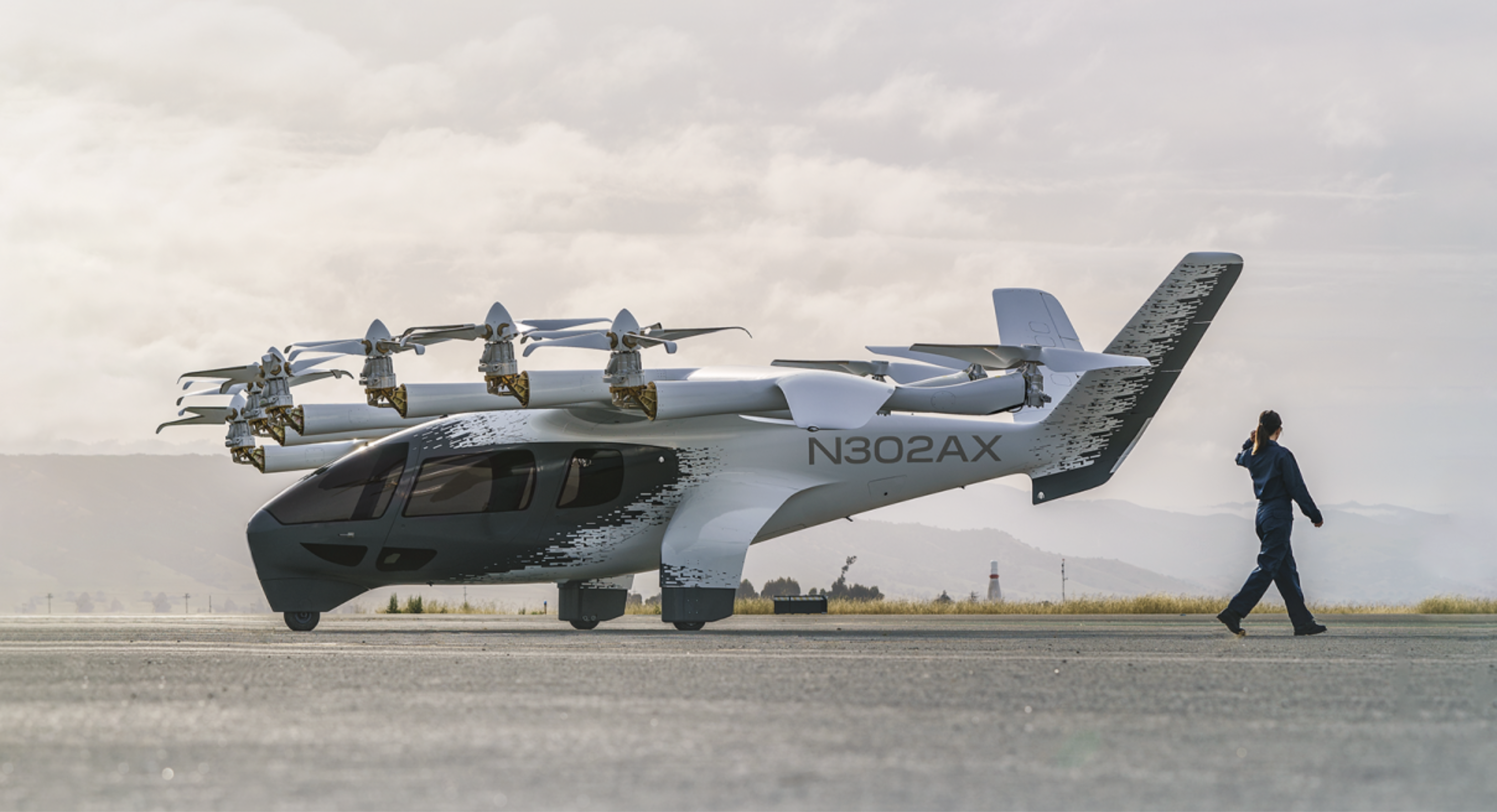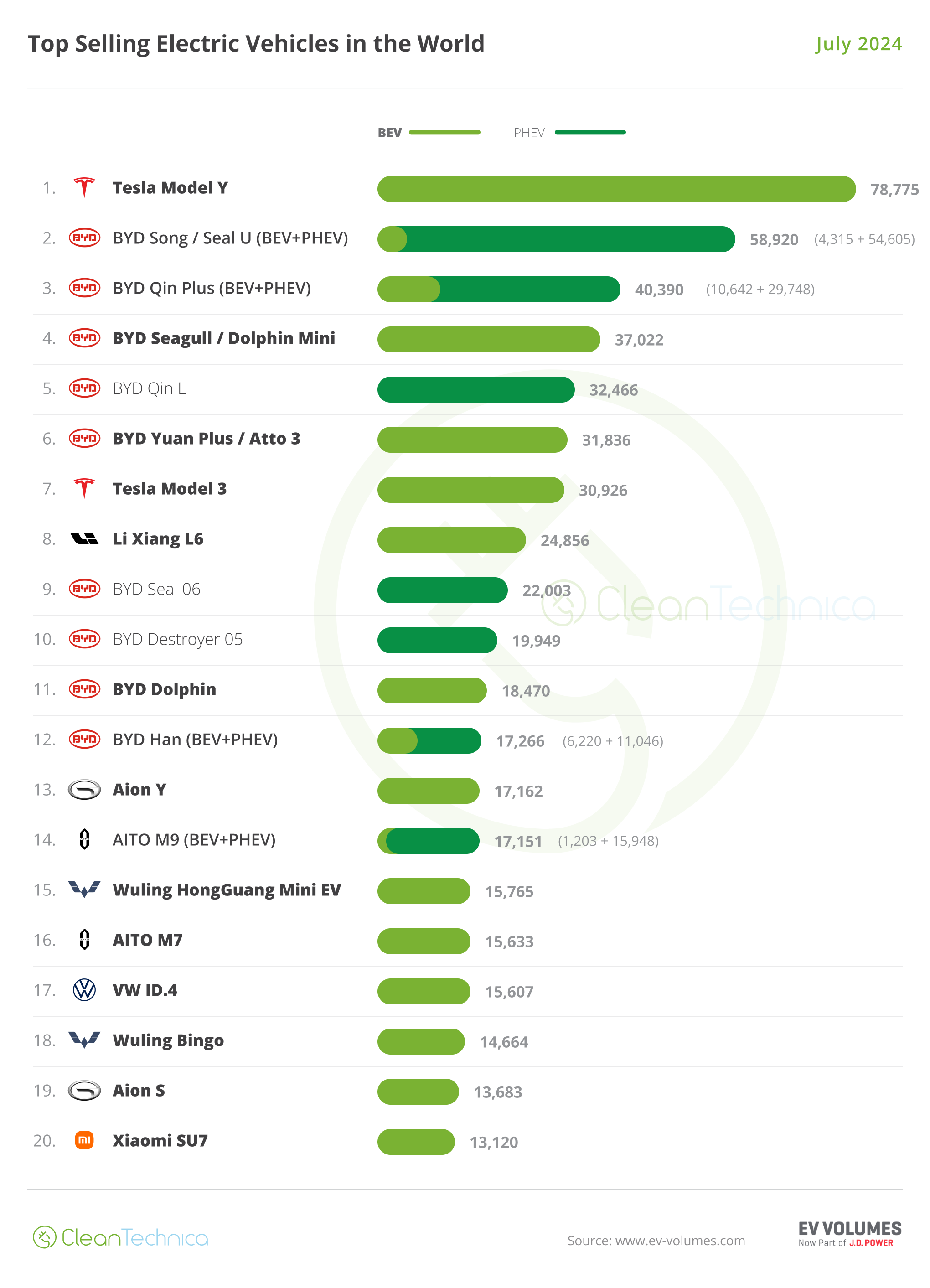
The large-scale adoption of new technologies takes time, and the shift to electric mobility is no exception. We all know that key barriers to EV adoption are range, charging network, and cost. For many, it’s also the perception that electric vehicles are, well, kind of boring, like appliances.
These impediments apply to EVs in general, but even more so to electric motorcycles, which are neither as developed, nor as widely adopted, as their four-wheeled ‘cousins’ are gradually becoming. But in today’s ever-accelerating society, last year’s perception is no longer today’s reality. Excellent range, fast-charging tech, and extreme performance are now a reality on two wheels as well. In fact, for the first time, electric is even daring to throw the gauntlet down to ICE machines.
Energica is based in Modena, home to Ferrari, Maserati, Lamborghini, and Pagani, in Italy’s ‘Motor Valley’. One of its high-performing motorcycles, the EVA Ribelle RS ‘hyper-naked’, is being fielded by a U.S. team called Tytlers Cycle Racing in MotoAmerica’s Super Hooligan National Championship against iconic conventional ICE (internal combustion engine) brands. It’s apparently the first time any electric vehicle has raced against endothermic machines in a national race series anywhere in the world, and in a sign of our changing times, Energica is even sponsored by PETRONAS iona, a brand dedicated to a new range of EV fluids and part of PETRONAS Malaysia’s global energy group.
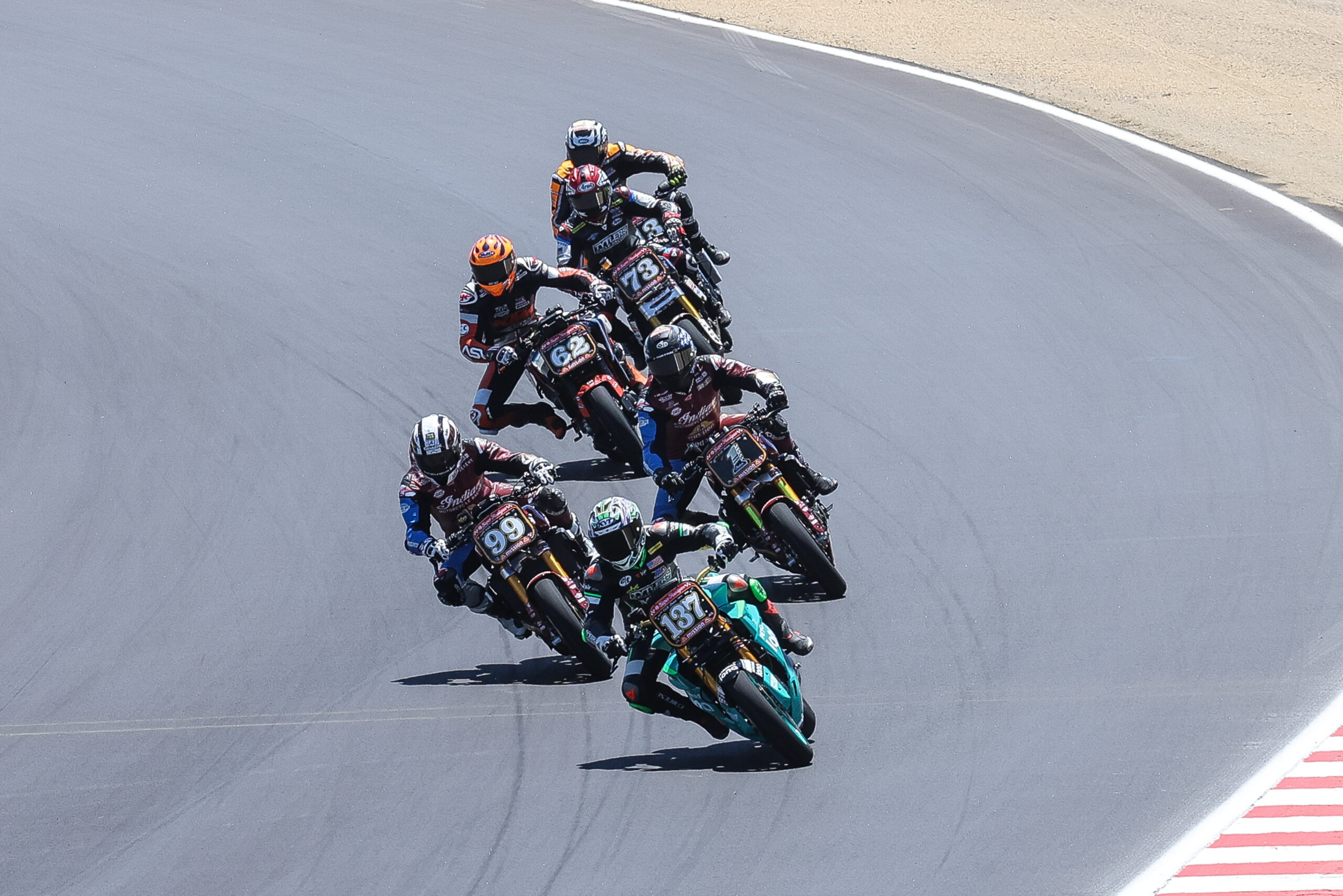
Stefano Mesa on the 137 Energica motorcycle, leading the pack at Laguna Seca.
Last time out at the iconic Laguna Seca Raceway near Monterey, California, that same EVA Ribelle RS was able to take the holeshot at the start of turn one (the position of being the first rider to pass the first turn of the course) and then lead the encounter for half a lap, and then to rewrite the outright lap record of the track for an electric motorcycle the following day, one which stood undefeated for 12 long years. All of this was achieved with a racing version of a motorcycle available for sale — not with a prototype — a bike capable of finishing in the top five in the series this year, and to do so more than once already.
How did we come to this? In keeping with the national obsession for speed, the Italian startup started to work on an electric racebike prototype in 2009, then incorporated all the technology — high-output battery, an internally cooled motor, and DC fast charging — in its first commercial model in 2014, called the EGO, the only electric motorcycle to do so at the time.
But not until introduction of a massive 21.5kw battery pack in 2019 was a direct confrontation with ICE on the track considered remotely plausible. This, because the torque for which electric motors are notorious, could now be matched to genuine endurance and range.
Everyday riders could finally take full advantage of the DC charging infrastructure simultaneously springing up in both the U.S. and Europe, especially on intercontinental highways. These electric ‘early adopters’ are proving to the world what their ICE peers didn’t think possible:
A retired 65-year-old Swiss named Hans Jürgen soloed all the way from his Alpine hometown to the remote shoreline of Capo Nord in Norway beyond the Arctic Circle and back, a ride of approximately 5070 miles (8,610 kilometers).
In the USA, the reliability of the new transcontinental DC charging network enabled record-breaking electric Cannonball Runs that still stand. Steven Day accomplished the traditional 2,800-mile L.A. to NYC route in just 111 hours, and another Energica enthusiast, Daren Sorenson, competed the 2,386-mile southern run from San Diego to Jacksonville, Florida in merely 73 hours.
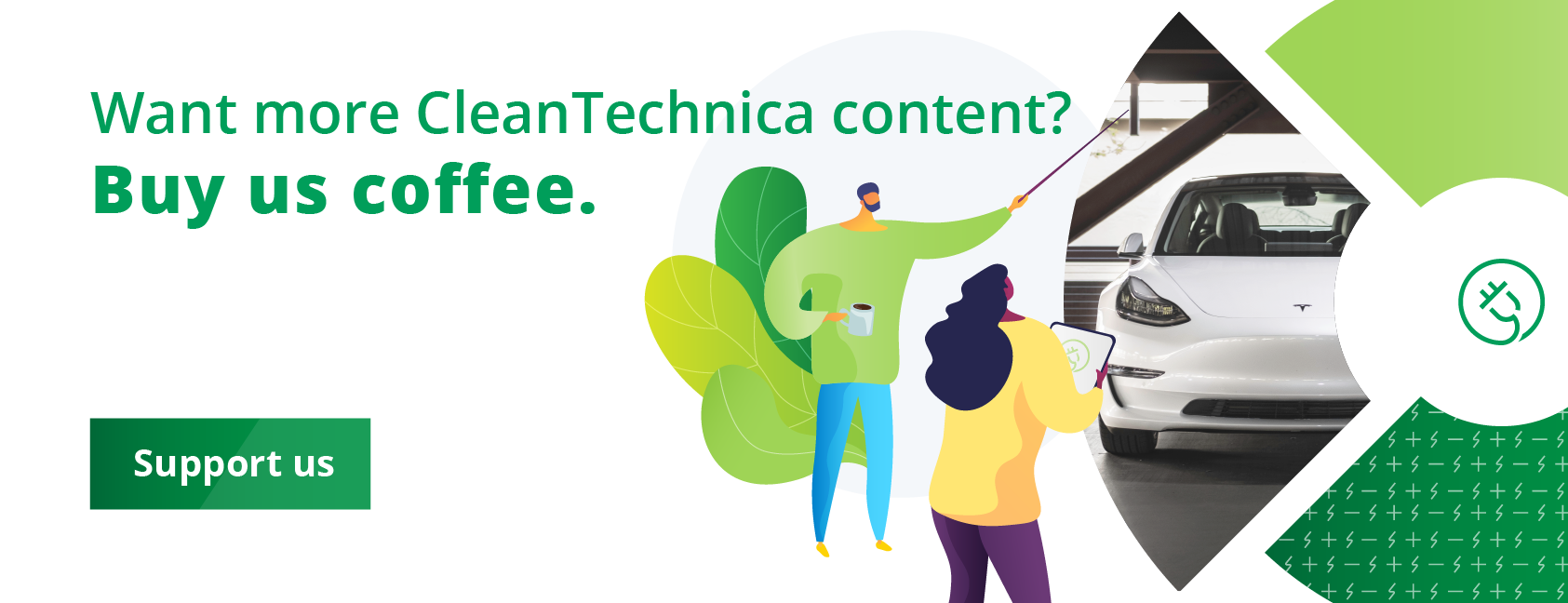
What You Think You Know About Motorcycles, & What You May Not…
ICE motorcycles have been around for more than a century, with a massive impact on society. They provide a cost-efficient alternative to cars, ease urban congestion, and give riders an unparalleled sense of freedom. Even if you are a non-rider, if you think about exploring to the ends of the world, it’s far more compelling to imagine doing so on a motorcycle than a minibus, right?
And let’s not forget, motorcycles don’t pollute nearly as much as cars. Or do they? Actually, they do. And then some. California’s Air Resources Board (CARB) shattered this commonly held misconception:
“CARB states that motorcycles with the latest catalytic converters create at least 12x more pollution per mile travelled. A modern auto creates 0.009 kg/mile in noxious gasses (carbon monoxide and carbon dioxide) but for motorcycles this is 0.11 kg/mile. Motorcycle buyers who remove their ‘cat’ and install a sport exhaust will spew 0.64 kg/mile – literally 71 times more than an automobile! Hence although motorcycles are less than 3.6% of registered vehicles in California and just 1% of travelled miles, they create over 10% of all passenger vehicle emissions.” — California Air Resource Board report 4/11/2018
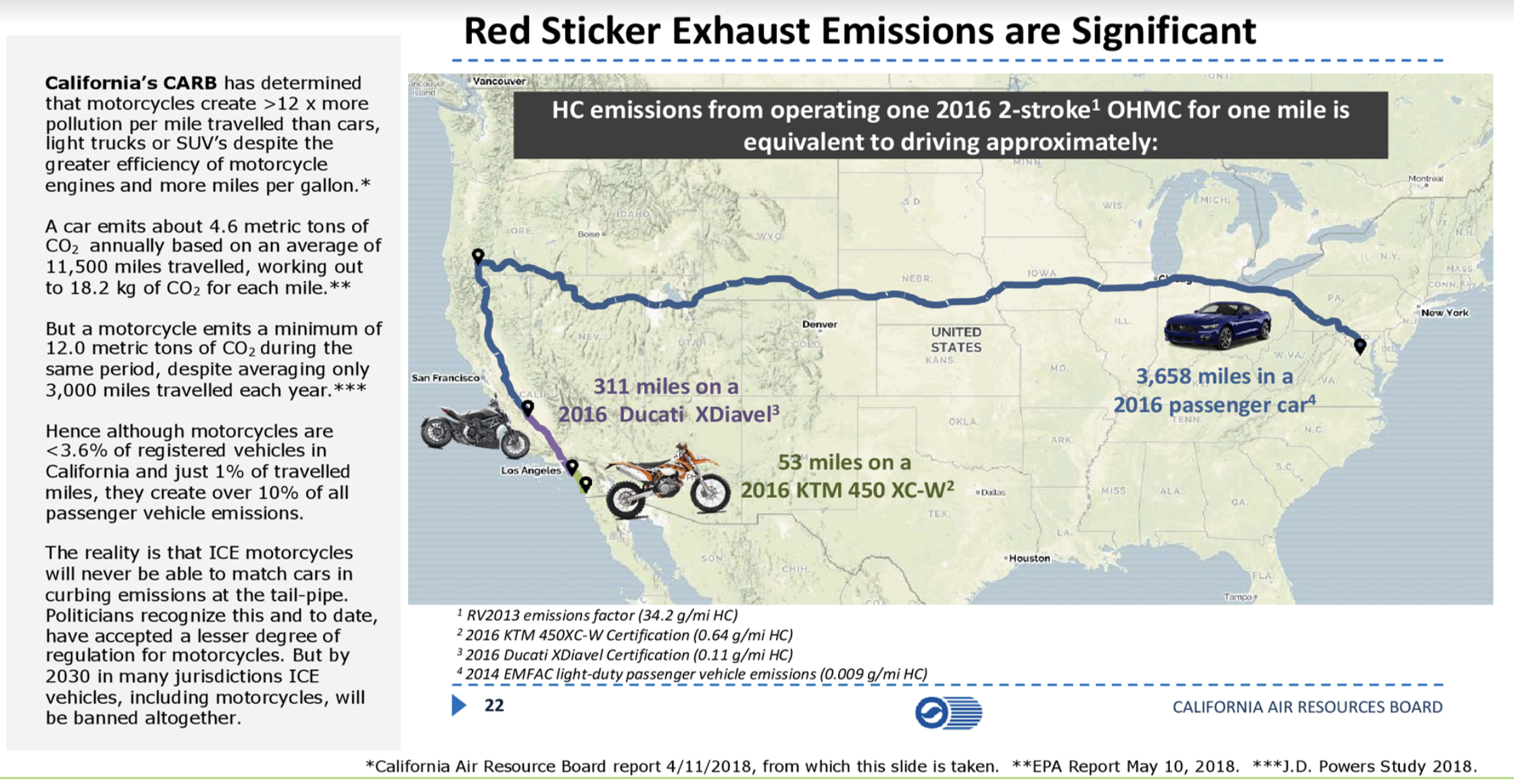
Should we force riders to ditch their bikes for cars? Not so fast. There is a better solution.
The practical appeal of EV’s for the general consumer — cheaper charging at home, vastly reduced maintenance costs over time, and positive net ecological impact — have no resonance for the typical motorcyclist. Addressing range, charging time, or location concerns are all positive, but do not address the deeper subliminal (OR explicit) objections of today’s riders. Rather, immediate torque, blistering acceleration, and absolute throttle control are their treasured virtues. But these perceptions are predicated on the myth that ICE bikes are as clean as their automotive counterparts. Perhaps the unexpected news from CARB will add to the impetus for conversion even among these ICE diehards who might then accept that Electric is the Future: even on two wheels.
See electric motorcycle brand Energica battle ICE on the track in SuperHooligan here!
I don’t like paywalls. You don’t like paywalls. Who likes paywalls? Here at CleanTechnica, we implemented a limited paywall for a while, but it always felt wrong — and it was always tough to decide what we should put behind there. In theory, your most exclusive and best content goes behind a paywall. But then fewer people read it! We just don’t like paywalls, and so we’ve decided to ditch ours. Unfortunately, the media business is still a tough, cut-throat business with tiny margins. It’s a never-ending Olympic challenge to stay above water or even perhaps — gasp — grow. So …

